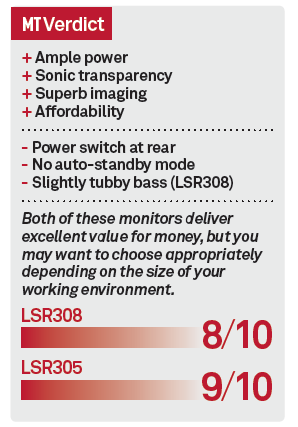JBL LSR308 & LSR305 Review
Development work on JBL’s flagship M2 monitor resulted in the Image Control Waveguide – and JBL has chosen to use it on the more affordable 3 Series designs. The series includes two models, the LSR305 and LSR308. Huw Price checks them out. Details Price LSR305 £258/pair. LSR308 – £438/pair Contact Sound Technology – […]
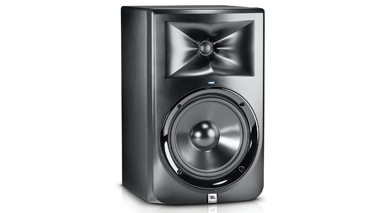
Development work on JBL’s flagship M2 monitor resulted in the Image Control Waveguide – and JBL has chosen to use it on the more affordable 3 Series designs. The series includes two models, the LSR305 and LSR308. Huw Price checks them out.
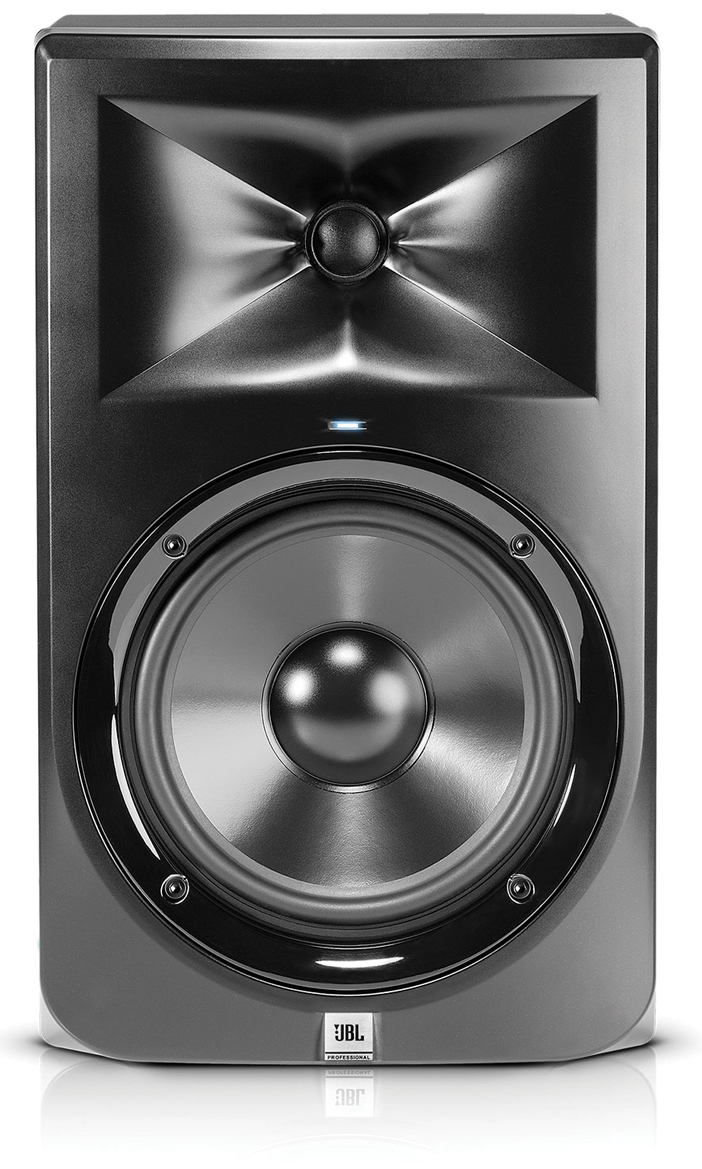
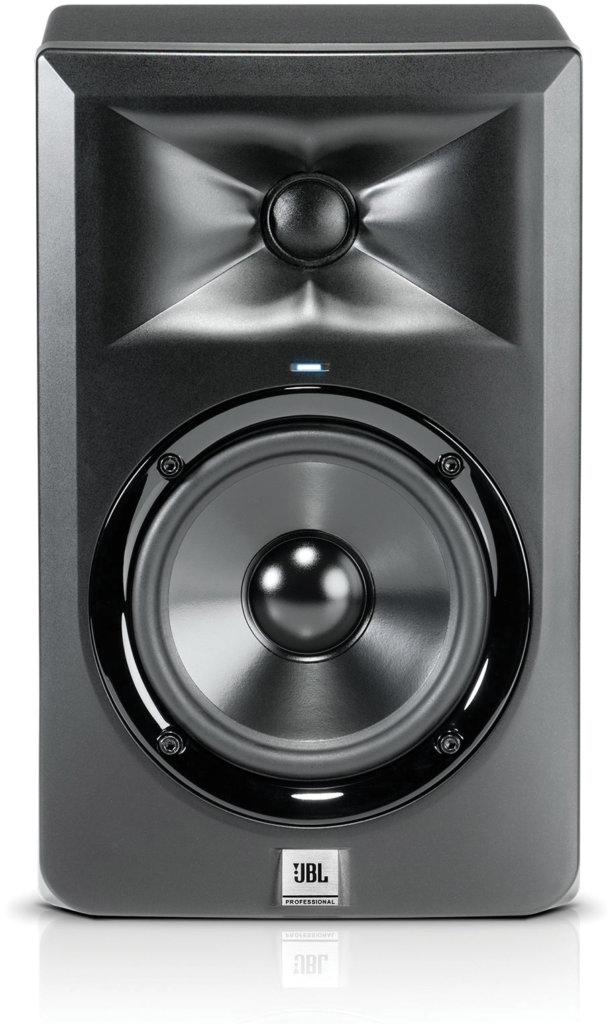
Details
Price LSR305 £258/pair. LSR308 – £438/pair
Contact Sound Technology – 01462 480000
Web www.jblpro.com
The LSR308 has an 8-inch woofer and frequency response is quoted as 37Hz–24kHz, with a peak SPL of 112 dB. The 5-inch woofer of the LSR305 contributes to 43Hz–24kHz and a peak SPL of 108dB. Class-D amplifiers deliver the power evenly between the woofers and tweeters – 112W for the LSR308 and 82W for the LSR305.
JBL’s Image Control Waveguide is designed for listeners to hear greater depth. It’s situated directly above the woofer. Precisely controlling soundwaves in the vertical and horizontal planes, the guide has a complex contour with tiny ridges that are intended to improve phasing and the balance of directed and reflected sound arriving at the listening position.
The cabinet features JBL’s patented Slip Stream rear-port design and inputs are balanced XLR and 6mm TRS jack. An Input Sensitivity switch provides -10dB/+4 dB settings, with LF Trim and HF Trim switches for frequency response adjustment and a volume control for fine-tuning.

LSR308
Given their size, you’d expect these big boys to have a sense of scale – and they don’t disappoint. In particular, the bass is fulsome and powerful, although there is a sense that the port is providing assistance in the low mids and there is a gentle tailoff below 50Hz.
We found the midrange particularly impressive. Guitars and vocals come over in a very natural and uncoloured way, with ample detail and very solid focus in the centre of the stereo image. The treble is similarly clear and unhyped. There’s ample high-frequency content, but the LSR308s certainly aren’t overly bright.
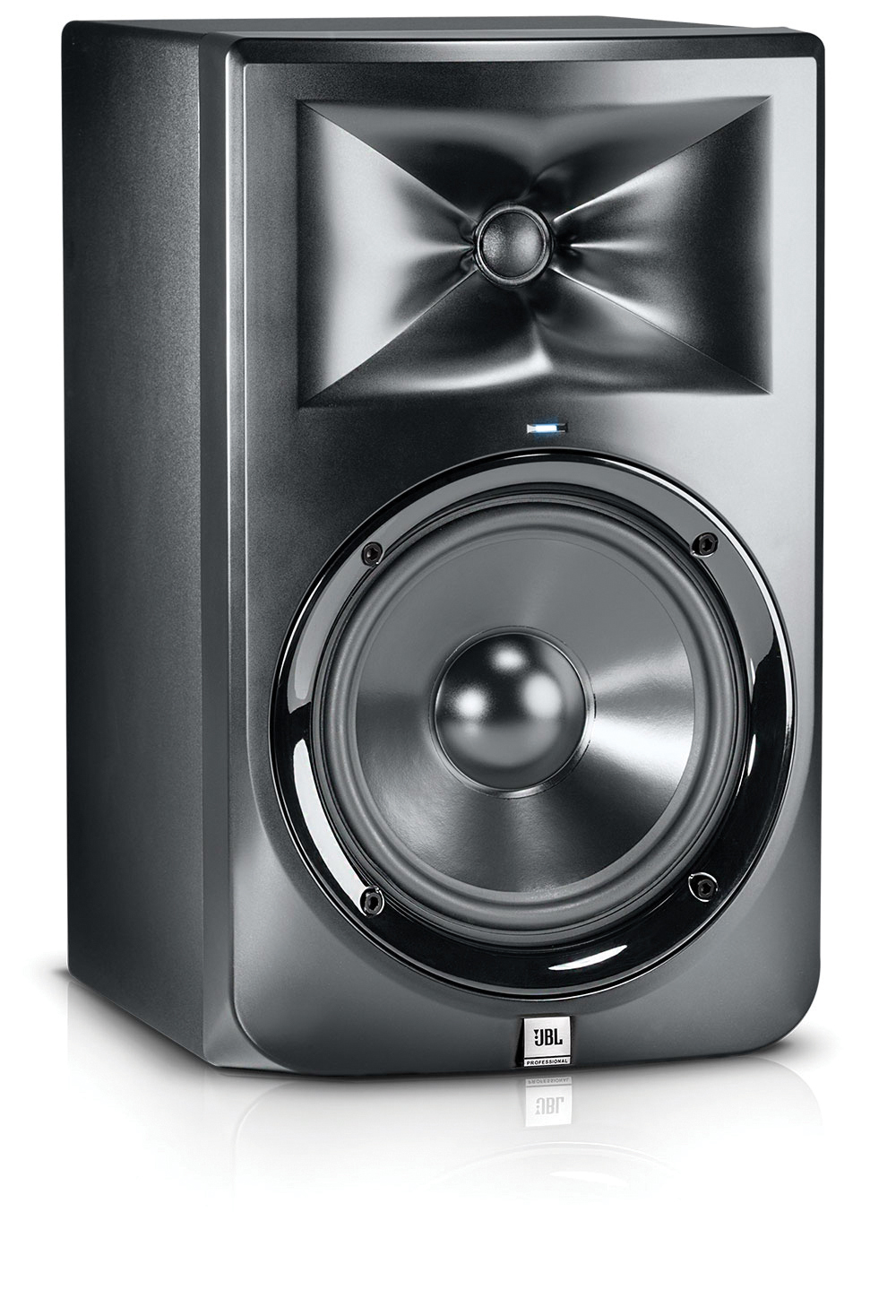
For the most part we were happy with the frequency adjustment switches set flat. However, tracks with dubby or heavy electronic bass lines did reveal a slight tubbiness with the LSR308s. The -2dB setting tightened this up quite well, but those who need bass extension with solid definition might need a tad more fidelity.
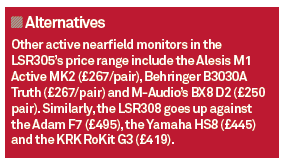
The big woofer also needs to be driven hard for the LSR308s to deliver all the punch they’re capable of. If you work in a large, heavily damped room, that shouldn’t be an issue. They also do a great job of creating a big vibe. Those who mix in smaller rooms, however, may find that the volume level at which the LSR308s really come into their own may be slightly too loud for long sessions. That’s where the 305s step in.
LSR305
The cabinet size and woofer are smaller, with the obvious knock-on effect that the bass is somewhat less profound. The consequences turned out to be favourable in several ways.
We were already impressed with the imaging and depth of the LSR308 soundstage. However, the less dominant bass allowed the LSR305’s imaging capabilities to shine through even more. At this price, the quality of both is fairly remarkable. Centrally panned mix elements were rock-solid and they remained fixed there when we leaned our heads to one side.
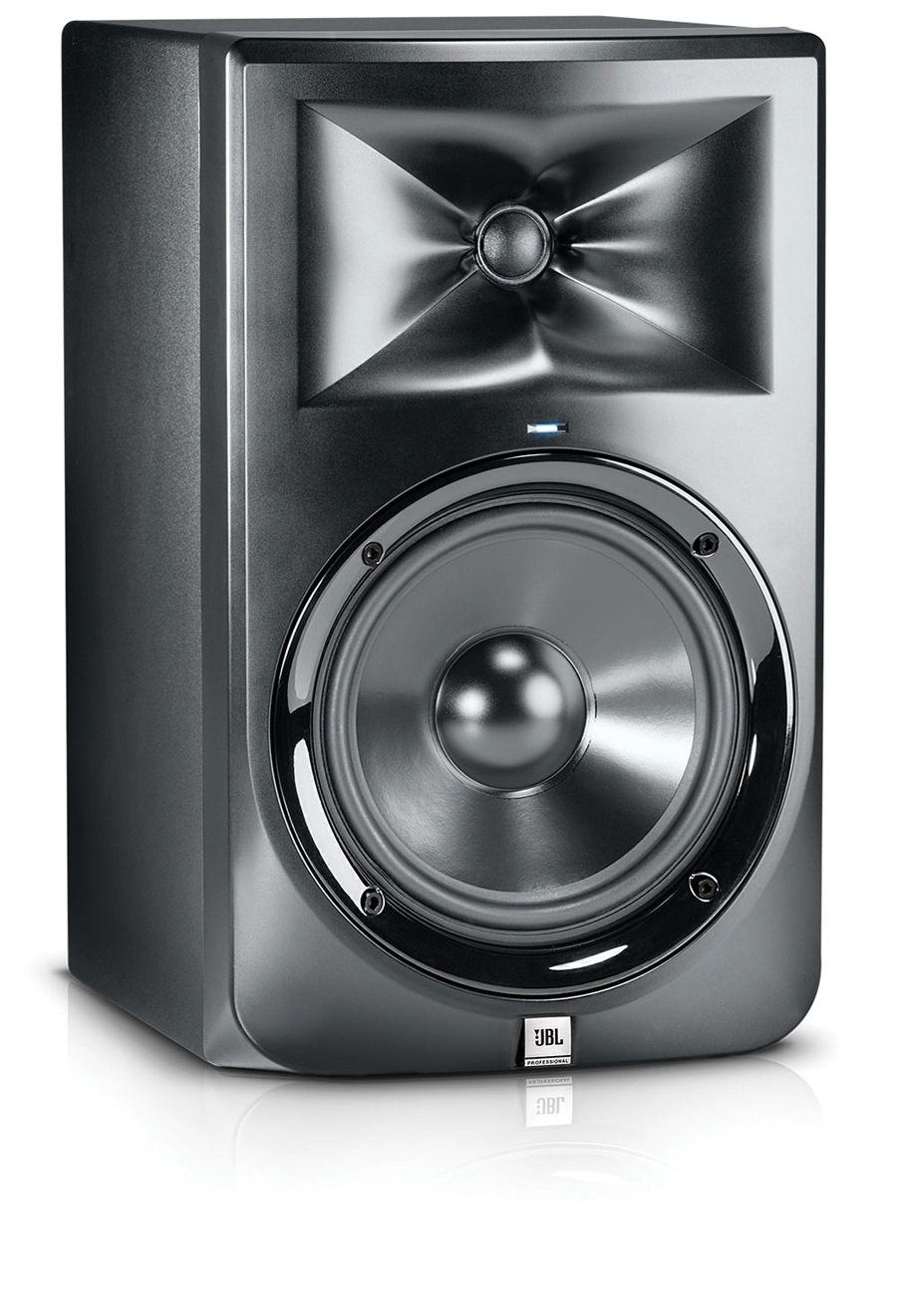
We should make it clear that the LSR305 is in no way bass-light. Far from it, in fact, because this monitor had a tighter and more solid low-end response in our listening room. We also found that the 305 doesn’t need to be pushed so hard to sound exciting.
The transient response of both models impresses, but the LSR305 is the pick of the pair. Complex hat patterns danced across the top of mixes and it was easy to distinguish between the tones of various cymbals.
The 3 in 1
The 3 Series monitors do feel lightweight and the build quality looks a bit too plastic and cheap. The switches also feel a bit flimsy but, given the price points, the sonic performance of both monitors more than compensates.
The LSR308 is certainly a cost-effective solution if you want ample bass, power and vibe. However, for sheer clarity, imaging and overall value for money, the smaller LSR305 steals the show.
